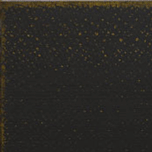VAHID HAKIM |
BACK
MORE ON ARTIST |
Born in 1969 in Isfahan, Iran, Vahid Hakim, a researcher-painter, is best known for his minimal abstract compositions with references of Islamic art. Throughout his life as an artist, Hakim has always been focused on creating a dialogic relativity between past and present in order to enrich the present horizon by observing the Persian/Islamic culture’s past.
Vahid Hakim’s artistic practice initially began with him representing nature and gradually, his works diminished into abstract imagery. The Persian/Islamic visual culture as well as Persian philosophy and Islamic mysticism are the core of what intrigues and inspires most of Hakim’s practice. Throughout his artistic career, he has also always been drawn to simplification in order to achieve a minimal abstract visual language.
Resembling minimal art, one of Hakim’s most characteristic approach is his uninterrupted effort to bring back the beauty and passion mostly lost in minimal visual movements, with a stylized and minimal tone. This happens by turning a simple archetypical composition to a harmonious one that designates some sort of Persian/Islamic awareness, in addition to his subtle use of Persian/Islamic patterns that portray this culture’s symbolic and secretive approach towards the universe.
As part of the process of art making Hakim is engaged with extensive research studying areas of Persian philosophy symbolically visualized in architecture, painting, traditional textiles, epigraphs and decorative objects and, the impacts of ancient ornaments on modern painting in other cultures. Relishing the type of art that is still connected to the conventional concept of beauty, Hakim vigilantly creates minimal paintings with figurative edgings and delicate colored motifs recently in the heart of different shades of blackness that to him symbolizes the notion of ‘absence’.
Designing Persian/Islamic motifs and employing them on an opaque colored base on paper, covered by layers of immaculate watercolor and ink hatches over one another, is Vahid Hakim’s designated language. With this technique, the dulcet symmetrical forms he has designed for each and every composition emerge very softly in colour from the depth of each painting. Although both the outer forms of the edges and the inside motifs are rooted in traditional Persian/Islamic designs as in lacquer pen boxes, book covers, doors, carpets and tiles, they feel very different, as they are tailor-made designs by the artist, for each of the works.
Vahid Hakim lives and works in Tehran. He has participated in numerous national and international exhibitions since his first solo show in 1994. He was the winner of the 6th Contemporary Painting Biennale in Tehran. In addition to painting, he writes and translates essays in the field of Art and Literature.





